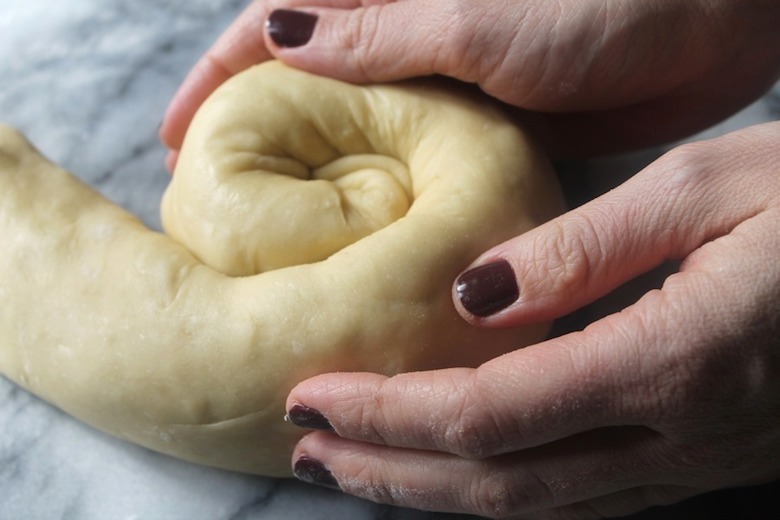
The evening of Sunday, October 2, marks the beginning of Rosh Hashanah, the Jewish New Year. The High Holiday (Holy-Day) is both a celebration and a time for earnest reflection. Jews see the New Year as an opportunity to be introspective about their past year and contemplate their course of action for the coming one.
Most Jewish holidays use food as a way to express tradition and create symbolism — Rosh Hashanah is no exception. The most well-known food practice during Rosh Hashanah is eating apples dipped in honey, a tradition that signifies the sweetness that one hopes for in the New Year. After the repentance that takes place during prayer, the meal that follows is a time for rejoicing.
Like apples, bread is also dipped into honey to reinforce the notion of sweet beginnings. The traditional bread of choice is a challah: an eggy braided loaf traditionally eaten during Friday night Shabbat meals and other Jewish holidays. Unlike the typical challah that is oblong though, the Rosh Hashanah challah is round to represent the cyclical nature of life. The feasting continues the subsequent day with observers eating a “new fruit” that has just come in to season, such as a pomegranate or dates. This tasting serves as a concrete way to acknowledge the newness of the year along with the changing seasonality of food.

Jeffrey Yoskowitz, co-founder of The Gefilteria (a purveyor of “reimagined” old world Jewish foods) says that Ashkenazi cuisine is rooted in seasonality. This considered, he uses the seasons as a guide to modernize traditional Eastern European Jewish recipes. Lately, this has meant spending time with his grandmother’s apple strudel, which is both appropriately seasonal and embedded with family memories. With the strudel, Yoskowitz shares that “there is [also] a family tradition” along with the Ashkenazi custom of blending recipes; Jeffrey prefers Macintosh apples for the strudel recipe, as well as for dipping into locally-harvested honey on Rosh Hashanah (see his recipe here).

Rosh Hashanah is also the favorite holiday of Leah Koenig, author of, The Hadassah Everyday Cookbook: Daily Meals for the Contemporary Jewish Kitchen. Growing up, Leah’s mother would buy a round challah studded with raisins for their traditional meal. Now that Leah has domain over her own table, she has created a round challah that swaps out raisins for creamy apple butter mixed with chopped slices of apple to be baked into the dough (get the recipe here). “Slicing into the loaf reveals swirls of sweetness and a moist, almost cake-like crumb that takes holiday tradition to delicious new heights,” she says.
Of course, not everyone who observe the holiday dines at home. If you choose to go out for Rosh Hashanah, there are several options around the city, including Mile End Deli in Boerum Hill. Proprietor Noah Bernamoff describes his approach as “[capturing] a little bit of tradition around the holidays.” According to Bernamoff, “There are times to push boundaries and others to respect them and we think Rosh Hashanah is a time for the latter… Celebrating the New Year is about togetherness with one’s family and community and the holiday meal, like prayer for some, is an enabler, not the main performance.”
Shana Tova — may your year be sweet like honey.



